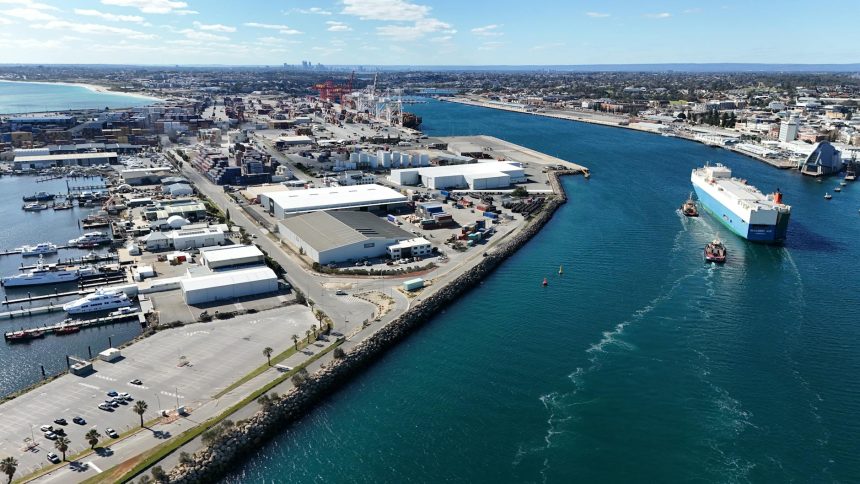churchill port natural gas potential
Churchill Port’s Future: Unlocking Natural Gas’s Role
Churchill Port’s Future: Unlocking Natural Gas’s Role
The Northern Gateway’s Next Chapter
Churchill, Manitoba, a vital northern port, stands at a crossroads. For decades, its strategic location on Hudson Bay has offered a unique gateway to global markets. Now, a compelling new opportunity is emerging, one that could redefine its economic landscape: the strategic integration of natural gas.
This isn’t just about incremental improvements; it’s about unlocking significant new potential for Churchill’s port and the broader supply chain. The question on many minds is: could natural gas be the key to revitalizing this crucial northern hub?
Why Natural Gas for Churchill?
The prospect of using natural gas in Churchill’s port operations offers a multifaceted approach to enhancing efficiency and sustainability. Let’s delve into the key advantages:
Environmental Considerations
Compared to traditional heavy fuels, natural gas burns cleaner. This presents an opportunity for Churchill to align with growing global environmental standards and reduce its carbon footprint. Cleaner emissions mean a healthier environment for the surrounding Arctic ecosystem.
Operational Efficiencies
Natural gas can power a range of port infrastructure, from cargo handling equipment to vessels. This could lead to more reliable and cost-effective operations, especially in the challenging Arctic climate where consistent energy supply is paramount.
Economic Stimulus
The development and implementation of natural gas infrastructure would likely spur local economic activity. This includes job creation in construction, maintenance, and specialized operational roles, providing a much-needed boost to the regional economy.
Potential Applications in Port Logistics
The integration of natural gas can manifest in several critical areas within the port’s operations:
Marine Vessel Fueling
A significant portion of the cost and environmental impact of shipping comes from fuel. Outfitting vessels with natural gas engines or establishing bunkering facilities for liquefied natural gas (LNG) could revolutionize Churchill’s maritime operations. This aligns with global trends towards cleaner shipping fuels.
On-Site Power Generation
Natural gas can be used to generate electricity for the port’s facilities, including cranes, refrigeration units, and administrative buildings. This offers a more stable and potentially cheaper energy source than relying solely on distant grid connections or diesel generators, especially during the long winter months.
Heavy Equipment Operations
Forklifts, trucks, and other heavy machinery used for cargo handling could transition to natural gas. This not only reduces local air pollution within the port but also offers potential cost savings on fuel for these intensive operations.
Challenges and the Path Forward
While the potential is substantial, realizing it requires careful planning and investment. Several factors need to be addressed:
- Infrastructure Development: Building the necessary pipelines, storage facilities, and fueling stations for natural gas will require significant capital investment.
- Supply Chain Reliability: Ensuring a consistent and reliable supply of natural gas to Churchill is crucial for uninterrupted port operations.
- Regulatory Frameworks: Establishing clear regulations and safety standards for the handling and use of natural gas in a remote Arctic environment is essential.
- Stakeholder Collaboration: Success hinges on strong partnerships between government, industry, Indigenous communities, and local stakeholders.
However, these challenges are not insurmountable. With strategic planning and a commitment to innovation, Churchill can overcome these hurdles. For a deeper understanding of the logistical considerations, exploring resources on supply chain management can offer valuable insights into optimizing complex logistical networks.
The Broader Impact on Northern Trade
The successful integration of natural gas at Churchill’s port could have ripple effects across the entire northern supply chain. This includes:
- Enhanced competitiveness for businesses using the port.
- Improved access to goods and services for northern communities.
- A potential catalyst for further industrial development in the region.
- Strengthened Canada’s position in Arctic trade and logistics.
This transformation is not just about energy; it’s about building a more resilient, efficient, and sustainable future for one of Canada’s most important northern gateways. The potential for natural gas to revitalize Churchill’s port is a conversation worth having, and one that could lead to significant economic and environmental benefits.
Conclusion: A New Dawn for Churchill
The exploration of natural gas as a cornerstone for Churchill’s port operations presents a compelling vision for the future. By embracing cleaner energy solutions, the port can enhance its operational efficiency, reduce its environmental impact, and stimulate economic growth. While challenges exist, the potential rewards for Churchill and the broader northern supply chain are immense. This forward-thinking approach could very well be the catalyst that unlocks Churchill’s next era of prosperity.
Featured image provided by Pexels — photo by Harrison Reilly









